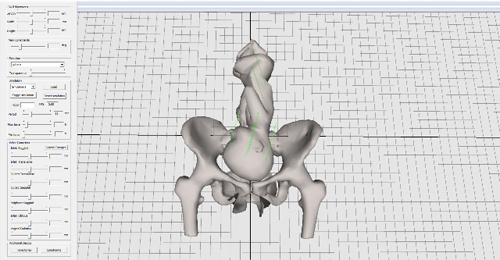British computer scientists are creating a virtual birthing simulator that will hopefully enable doctors and midwives to receive an early warning of an upcoming unusual or dangerous birth, the University of East Anglia said Friday.
The simulator uses specific data about an expectant mother and fetus, such as the shape of the mother's body and the positioning of the fetus. A health practitioner can then view a three-dimensional birth simulation that predicts what will happen during actual labor.
"We are creating a forward engineered simulation of childbirth using 3D graphics to simulate the sequence of movements as a baby descends through the pelvis during labor," says Rudy Lapeer, who is leading the project at UEA's computer sciences school.

"Users will be able to input key anatomical data-such as the size and shape of the mother's pelvis, and the baby's head and torso. By doing this you will be able to set different bespoke scenarios for both the mother and baby," Lapeer says.
The research was scheduled to be presented Friday at the International Conference on E-Health and Bioengineering in Romania.
It will be interesting to see what kind of devices are designed off this simulation software. How real could the simulation be? Or is good enough for health practitioners to see it on a screen?
The simulation software that Lapeer's team is creating will rely on ultrasound data to create a geometric model of a baby's skull as well as the mother's body and pelvis. Programmers are taking into account the force from the mother pushing during labor and are even modelling a "virtual" midwife's hands which will interact with the baby's head.
"We hope that this could help to avoid complicated births altogether by guiding people in the medical profession to advise on caesarean sections where necessary," Lapeer says.
In the United States, this should hopefully provide another way to save the health system from costly procedures and complications. U.S. caesarean sections have skyrocketed in recent decades, with the surgeries making up nearly a third of births.